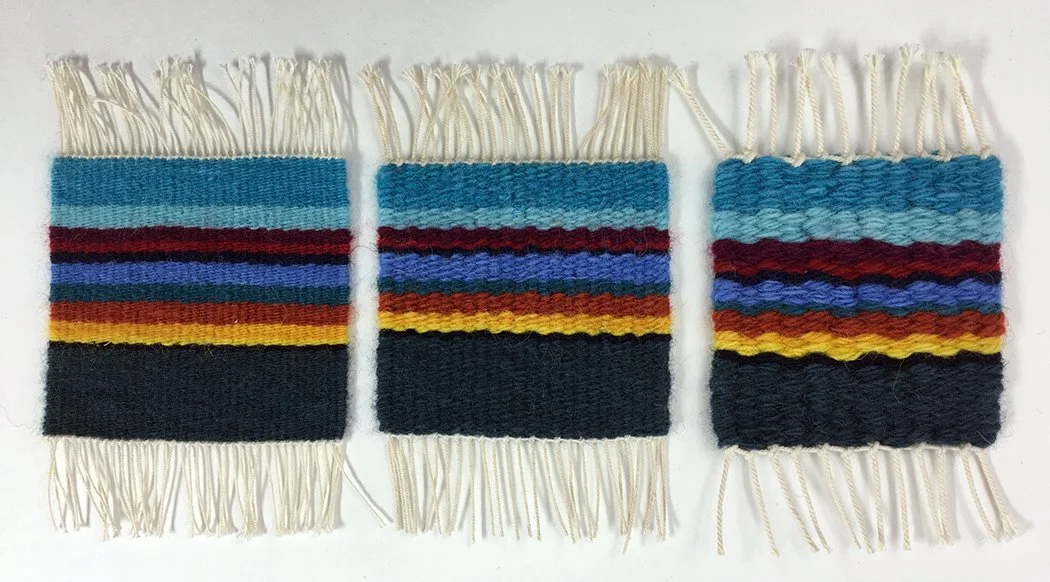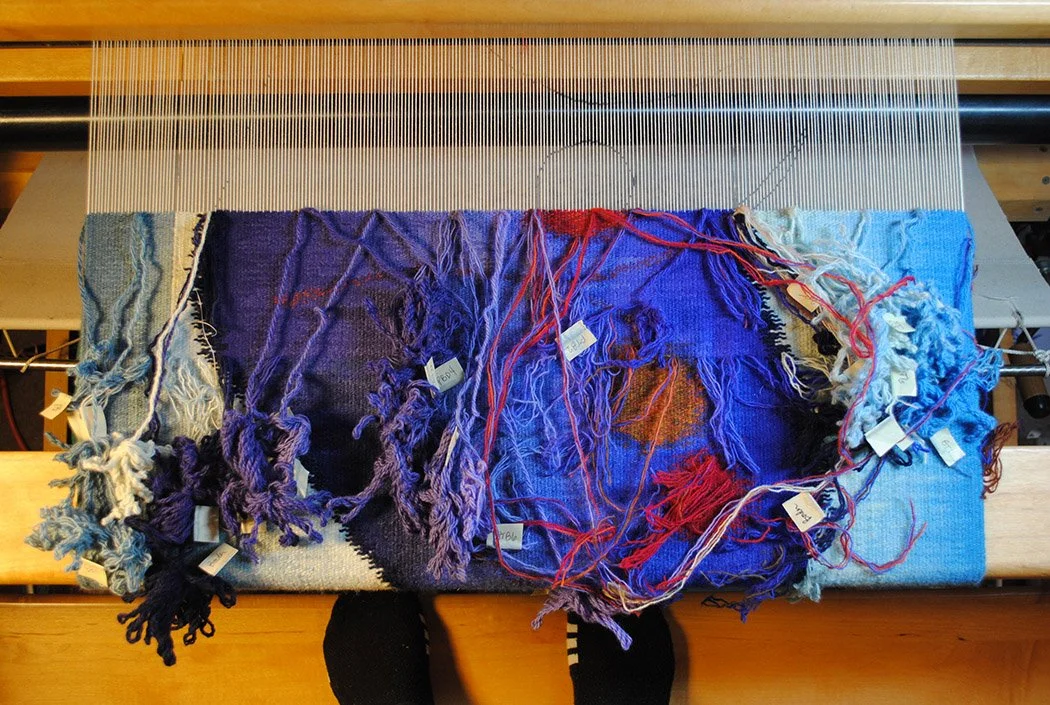I started putting together a list of resources from my past blog posts and newsletters of the things that I see give tapestry weavers the most trouble. I wrote the first blog post about this February 22, 2024 and realized there was at least one more blog post worth of things high on the list of most-frustrating.
In the February 22 post I covered these things:
weft tension
choosing yarn
getting the last warp tight on a continuous warp
design and getting the effects you want
Let’s add a few more to the list.
sett
Sett is what we call the measure of how many warp ends is in a particular distance such as an inch or centimeter. A common tapestry sett for modern looms at fairly small sizes is 8 ends per inch or epi. “Ends” refers to warp ends meaning one strand of warp. In 2018 I wrote a series of blog posts about sett. In reviewing these posts to update links and check to make sure I still agreed with myself, I realized that this series of posts is a real treasure trove. I could make a whole online class with the material in these six posts, so set aside some time and give them a good read. There is something for every level of tapestry artist.
In the recap post linked below, the six posts are linked in the order they are intended to be read.
Blog post: Ready, Sett, Go: A recap of sett for tapestry weaving
Warp tension: How tight should my warp be?
Copper pipe loom warped in the figure-8 method
This is a question I get fairly often because I teach online. I’m often a little surprised when I go around the room in an in-person workshop and feel the warps. The differences in warp tension can be quite extreme. Some people have warps that are almost floppy and some have warps that are so tight you could play them like a guitar.
How tight is right is an individual question and it does depend on the kind of loom you’re working with and whether or not it has tensioning ability. The blog post and video linked below give you some guidelines
Blog post: Questions from the book: How tight should my warp be?
Ease of weaving: loom or warp length
Some of you will not take me up on this trial, but I challenge you to consider longer warps. This can make so many things about tapestry weaving easier especially how you make the shed. Whether you have a shedding device like treadles, leashes, or a rotating shedding bar, the longer your free warp is above your fell line, the easier it can be to weave especially when you have a tighter warp tension. There are other problems that can arise when your warps are short like ridging. And you’ll find the weaving is more pleasurable and you’ll have less trouble with problems caused by weft tension like your tapestry getting narrower or lice showing.
I tackled this question in a blog post and video
Blog post: Questions from the book: Ease of Weaving and Loom Length
Weaving from the front or the back?
This will decidedly not have been a question for many of you, but some of us have spent a bit of time struggling with which way to weave a tapestry. Traditionally in France and other areas of Europe, tapestries were and are woven from the back. This allows some techniques to be accomplished like double weft interlock and keeps the tails from getting between the tapestry and the cloth beam when the weaving is advanced. Smart and innovative weavers like Archie Brennan started questioning why it was doing this way traditionally in the mid to late 20th century and now there are more tapestry weavers in the USA weaving from the front than the back. The blog post and video below talks about why you might choose one way or the other. For myself, I now do both depending on what the technical demands of the tapestry are and what loom I’m using.
Blog post: Weaving from the front vs the back
Looking for further resources?
I have many online courses that address the issues that beginning and intermediate tapestry weavers have technically as well as courses on design, dyeing yarn, and a special warping technique called Fringeless. You can find more information about all these classes on my website under Online Learning. But if you’re brand new to tapestry, take a look at this blog post to help you decide.
If you’ve got some basics under your belt such as the Introduction to Tapestry Weaving course, consider joining the Tapestry Discovery Box and/or Summer of Tapestry. These are courses that teach you something while offering support, a community of other weavers, and a great deal of weaving fun.
What particular tapestry issues have come up again and again for you? Let us know in the comments! If I don’t already have a resource for you, I might make one!



